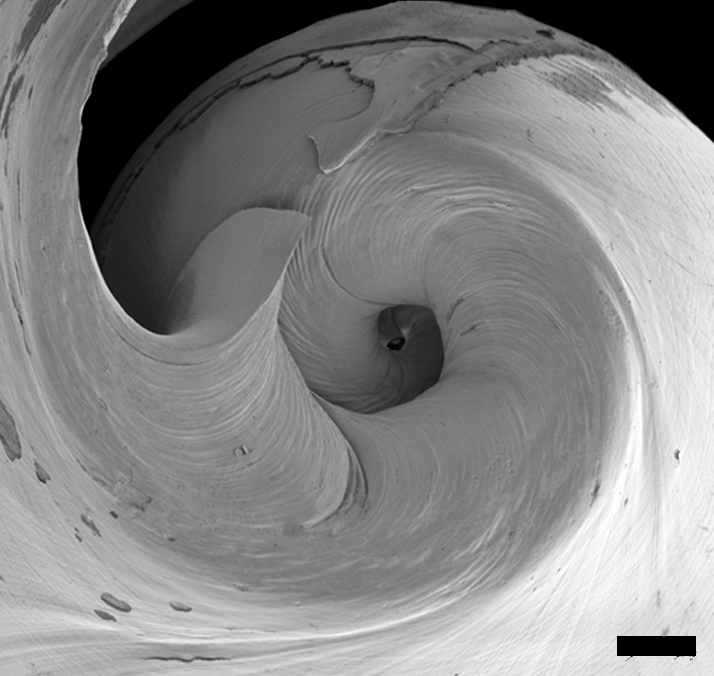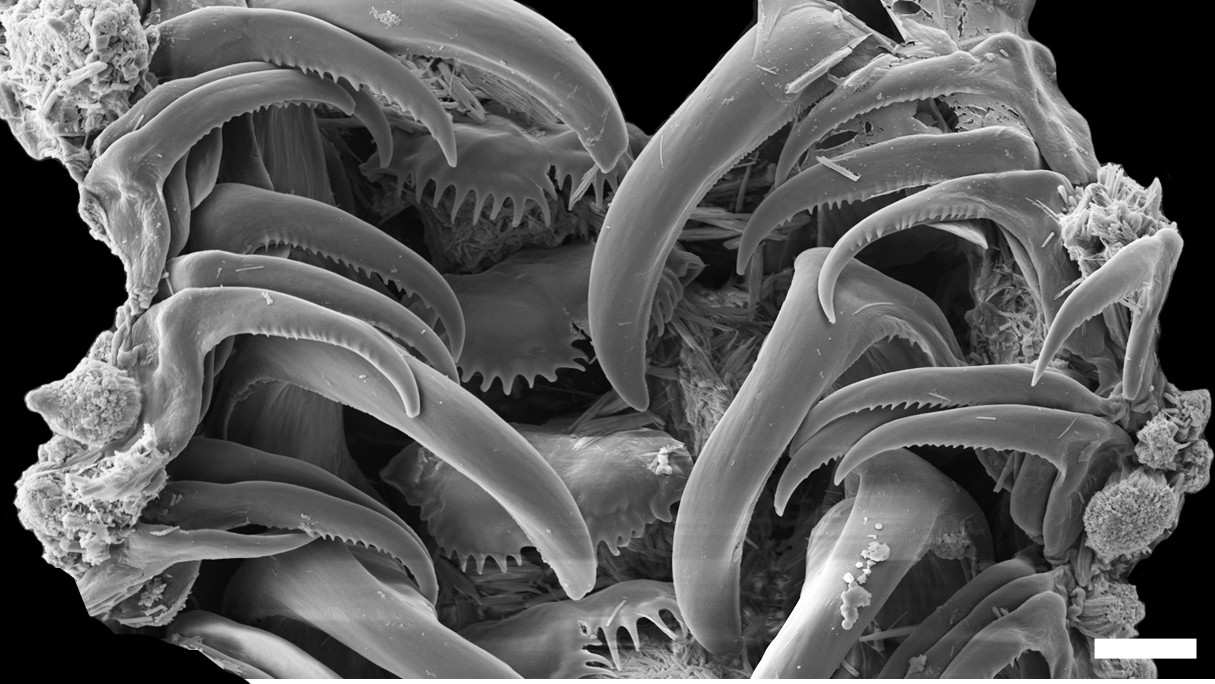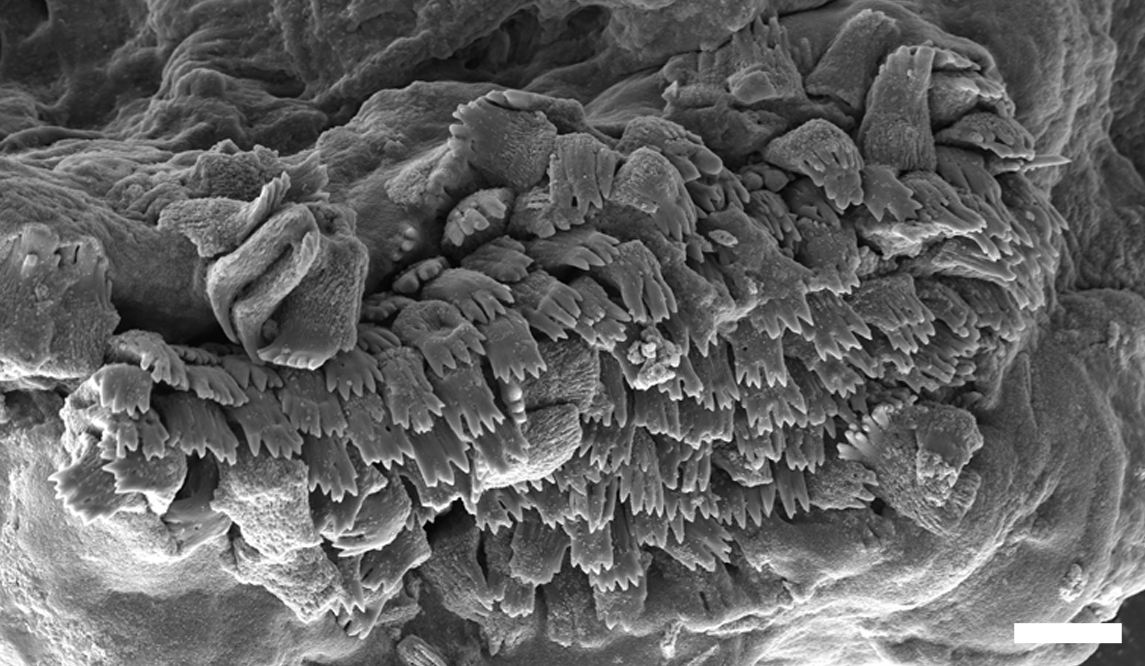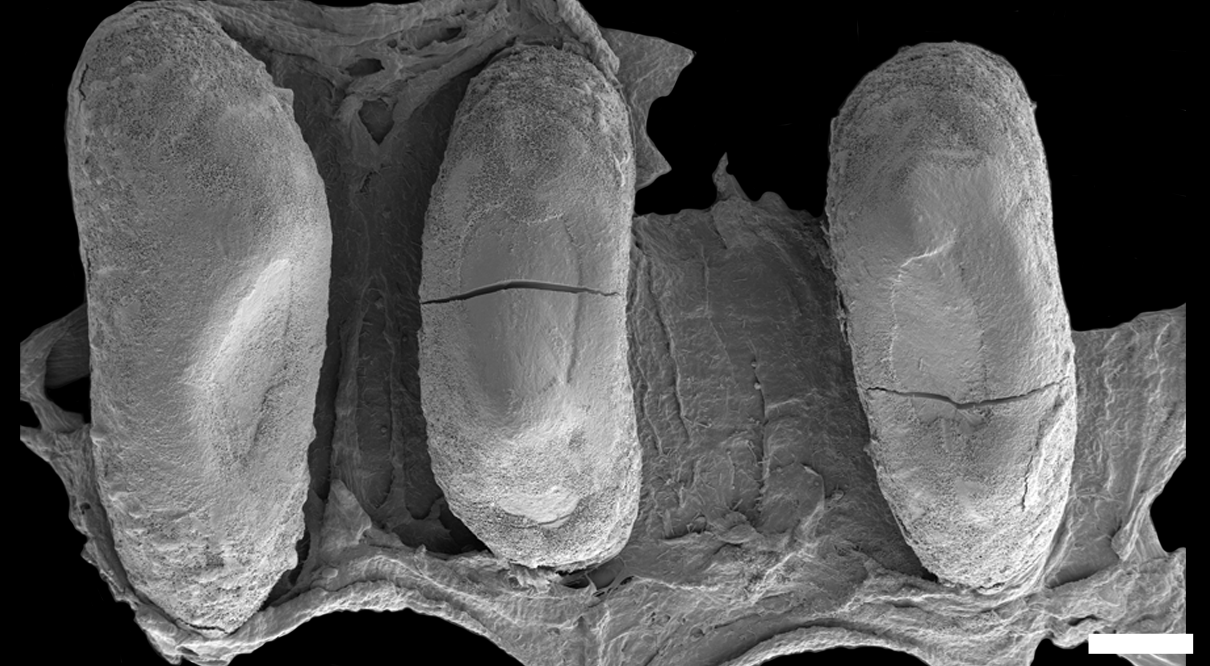Cylichna cylindracea
Shell description
The thick shell is external and white to whitish transparent in colour, usually with an elongate cylindrical shape, while the outline of the shell is straight and rectangular when viewed from above. The opening is small, but extends the length of the shell. The top of the shell (apex) is sunken. The shell is not umbilicated. The shell surface has a pattern consisting of spiral grooves and growth lines. The shell is covered by a transparent to brownish-orange outer layer (periostracum) that is thickest around the opening and top of the shell. The length of the shell ranges between 3.4–9.6 mm.
Animal description
The body is white in colour. The head shield is lobed towards the back and there is no middle line. There are no side extensions of the foot (parapodial lobes) and no extension of the mantle under the snail (pallial lobe). The larval kidney is not visible trough the shell.
Anatomy
The radula consists of 14–17 rows of teeth; with three outer lateral teeth and one inner lateral tooth on each side and one central (rachidian) tooth. The outer lateral teeth are curved with a broad basis; and the outer edge may carry delicate denticles. The inner lateral teeth are curved with a broad basis, and the inner edge carries coarse denticles while the outer has delicate denticles. The central tooth bears denticles. This species has jaws. The gizzard is cylindrical and surrounded by thin muscle fibres, and contains three equal sized kidney bean shaped plates, the dorsal surface often has raised fields; this surface is covered by crystal-like needles and smooth pits. The underside of the plates has a net-like pattern of pits. The foregut carries a small crop without folds. The male reproductive system is rounded, with no obvious separation between prostate and penial chamber.
Ecology
Occurs in sandy bottoms down to 1500 m (Thompson 1988).
Geographical distribution
Occurs in Norway from Lofoten and southwards. Also occurs in Iceland, the British Isles and down to the Mediterranean Sea, Azores, Canaries and perhaps the South Atlantic (Thompson 1988, Høisæter 2009).
References
Høisæter T (2009). Distribution of marine, benthic, shell bearing gastropods along the Norwegian coast. Fauna Norvegica 28: 5-106.
Thompson TE (1988). Molluscs: Benthic Opisthobranchs. In: Brill EJ og Backhuys W. Leiden. Mollusca, Gastropoda: keys and notes for the identification of the species. Vol. 8. New York, Copenhagen, Cologne. 356 sider.












